In this blog series we'll present the business case for cloud computing to empower more organizations to see the financial advantages that augment the technological benefits of migrating to cloud computing. In this series installment, we'll delve further into the different types of Cloud and the associated costs.
3 Types of Cloud Compared
Mentioned in the previous installment was Infrastructure as a Service (IaaS): the CPU, data storage, bandwidth and an operating system delivered as a flexible service (ordered and provisioned incrementally). Each customer can then load their application software stack on top, taking advantage of this easily-resized Cloud Infrastructure (CI) on demand. This allows for scaling up or down as needed, providing a huge advantage to businesses in terms of flexibility and preservation of capital.
Platform as a Service (PaaS): Simply, this adds to CI a full software stack; for example, Linux. Each customer is then able to write or load applications into this environment, with the provider responsible for expanding or contracting all elements to adapt to the changing requirements of the users. Where a high degree of availability or service is required, this provides an impressive advantage for businesses looking to react and scale rapidly.
Software as a Service (SaaS): This takes CI and Cloud Platform (CP) and adds a fully managed application, with examples of this being salesforce.com, dropbox.com or facebook.com. The user will consume these apps, incrementally and usually on a per-user basis, with very little long-term commitment. This does provide advantages to businesses needing an application for a short-term or test basis, or in a business where pure applications and dedicated staff are scarce or expensive. But, this format also provides very little customization or control.
Representing the different cloud services in terms of housing, here's what would be included within each service:
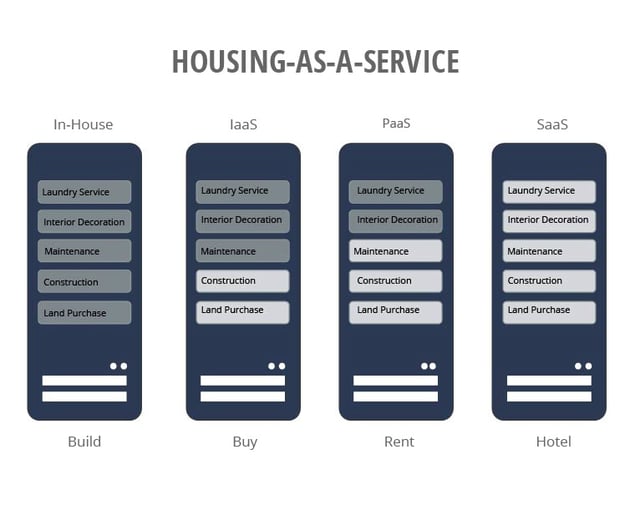 It’s important to understand that within the three types of cloud, there are advantages and disadvantages to each depending on their application, the type of business outcome sought, the level of security and privacy needed and overall control. There are also deployments of combinations of all or some of the above, but we’ll discuss this in another series as it’s a huge topic.
It’s important to understand that within the three types of cloud, there are advantages and disadvantages to each depending on their application, the type of business outcome sought, the level of security and privacy needed and overall control. There are also deployments of combinations of all or some of the above, but we’ll discuss this in another series as it’s a huge topic.
In building a business case, ultimately we are driving an expression of ROI. And, eventually, this leads into comparison between the deployment of capital (CapEx) vs. the preservation of capital - aka the deployment of operational expense (OpEx). This is purely a traditional “buy vs build” analysis and mostly straight forward and we'll present examples of this type of analysis and calculation within this series. However when it comes to the cloud, there are different approaches to building the business case to ensure all unique costs are truly identified: Infrastructure business case, the Applications business case and the Talent business case. Let’s look at each.
Infrastructure Case
When is this the correct approach? Usually, there is some compelling event to initiate a move to the cloud, such as a compute upgrade due to increased demands from users or applications, end-of-life of data centre facility assets or a facility move where everything needs to be built again. The initial and most significant savings are usually found when abandoning infrastructure in favour of the cloud, with infrastructure savings being the most significant part of the business case in terms of cost savings. The reason why is that in-house IT is typically under-utilised, because when infrastructure purchases are being considered, not all applications that will be deployed on it are known and so a margin is added for this misunderstood capacity requirement. Additionally, over-deployment is a result of companies configuring infrastructure for peak loads. We add to this the other fixed and variable costs we identified previously: cost of specialised data centre assets to house, power and cool servers, the cost of real estate which includes carrying finance charges, lease costs and other terms, the skilled staffing costs of maintaining the data centre and the systems within it. Other costs include back-ups, redundancy at a second facility, certifications, security and decommissioning costs when moving to the cloud.
Applications case
What are the compelling events that drive a move of applications to the cloud? With the three main types of cloud there are a number of options of what to do with applications, but this requires a look at what the main drivers are. This includes a major fork-lift to update an in-house custom application, a shift to a new application requiring higher availability and performance, and scarcity of maintenance resources such as talent and quality control. Therefore, there's many options for then dealing with the applications.
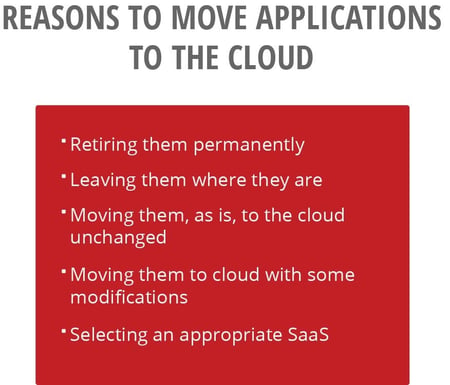
Each of these reasons will have different cost implications, which will need to be outlined for the business case. For example, leaving one application where it is, but moving others, places a greater share of the remaining infrastructure costs on that application.
Staffing case
In most businesses regardless of industry, people are among the highest costs, with IT staffing being no different. In Part 1, we introduced the opportunities presented by the cloud in that it liberates staff dedicated to maintenance, keeping infrastructure running, and customising and editing application code. While all of these roles and responsibilities are important and critical, they can be better deployed to create unique differentiators in applications that set their business' apart from the competition and provide more value for their customer's strategically.
Ultimately this is an opportunity cost and needs to be included in the analysis. The other costs are more easily counted: permanent staff and temporary, their offices and facilities and the total burden of benefits, recruitment, retention, risk, training and development and retirement. Add to this the cost of technology and other local jurisdictional costs associated with labour and employment such as termination costs, professional advice, holidays and competitive considerations driving perks to continually attract and retain top talent - all of those costs should be identified in the business case.
In Part 3, we will elaborate on the benefits for the cloud which contribute to the business case, and introduce a few sample cases.
-1.png?width=1092&height=792&name=logo%20(1092x792)-1.png)
%20copy(black%20letters).png?width=1092&height=792&name=logo%20(1092x792)%20copy(black%20letters).png)
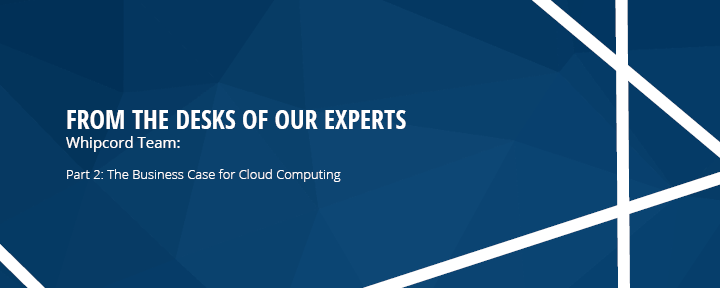

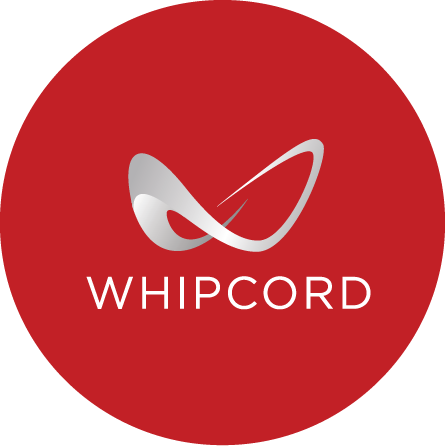
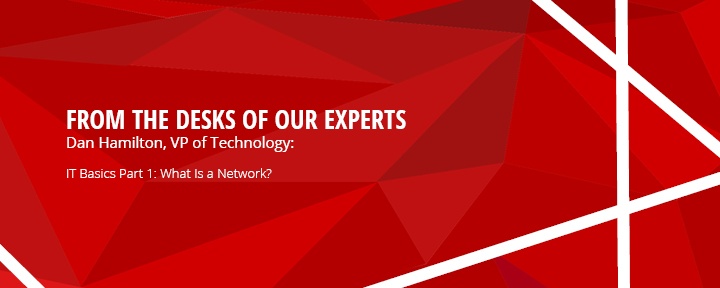
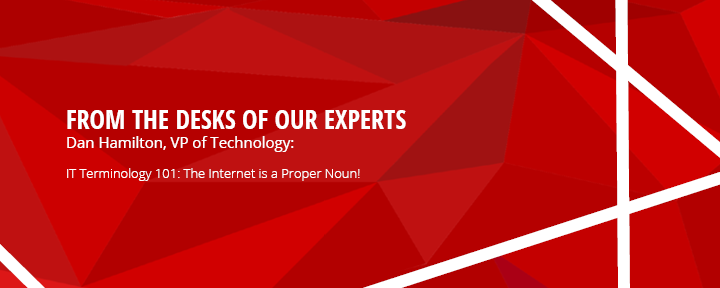
.png?width=100&height=91&name=white%20logo%20(100x91).png)